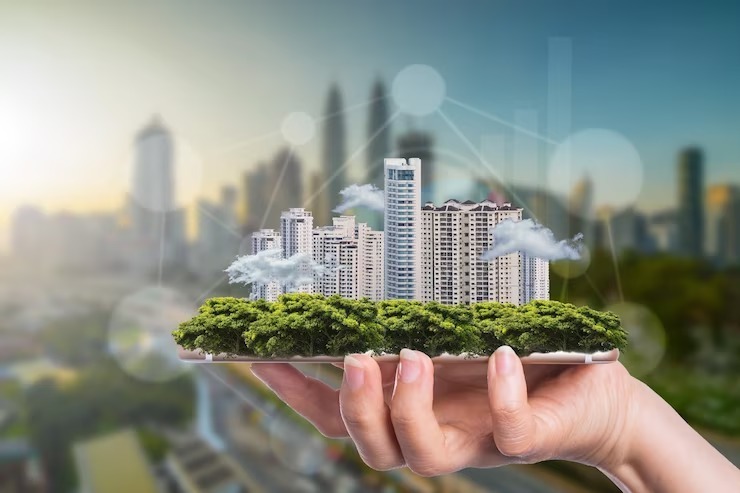As we celebrate our advancements and progress, it’s crucial to reflect on the impact of various industries on the environment. One sector that often comes under the radar is the construction industry. While it plays a pivotal role in shaping our cities and societies, its environmental footprints are significant and cannot be ignored. The time has come to address the environmental concerns associated with construction and emphasize the urgent need for decarbonization.
The Call for Sustainable Construction
The construction industry, known for its emphasis on efficiency and cost-effectiveness throughout history, is currently facing a crucial moment. In the midst of making global efforts to tackle the challenges of climate change, there is an immediate need for a fundamental change in the construction approaches. The conventional model, marked by resource-intensive methods and a significant dependence on fossil fuels, is no longer sustainable, given the evolving climatic conditions on our planet.
Environmental Impacts of the traditional construction methods:
1. Carbon Emission
The construction industry is a major contributor to carbon emissions. The manufacturing of building materials, transportation of construction materials to the site, and on-site activities all emit considerable amounts of carbon dioxide into the atmosphere. The reliance on energy-intensive processes, such as cement production, significantly adds to the industry’s carbon footprint.
2. Resource Depletion
Conventional approaches exert pressure on limited resources such as land, resulting in adverse effects like deforestation, loss of habitats, and a rise in carbon emissions. This places a strain on our environment and calls for a reevaluation of practices toward more sustainable alternatives.
3. Waste Generation
Construction projects often produce substantial waste, contributing to an unsustainable “take-make-dispose” model. It’s crucial to pivot towards sustainable practices, minimizing waste through recycling and embracing a circular economy approach.
4. Energy Inefficiency
Traditional construction methods are marked by energy-intensive processes, notably in cement production and transportation of materials. Decarbonizing construction plays a substantial role in the emission of carbon, contributing significantly to environmental concerns.
5. Habitat Disruption
The alterations in land use associated with construction activities frequently cause disturbances in natural habitats, resulting in biodiversity loss and ecosystem degradation. Additionally, the process of deforestation for material extraction intensifies these ecological challenges. Addressing and minimizing these impacts is vital to foster a more harmonious coexistence between construction endeavors and the environment.
6. Water Usage and Pollution
Construction activities involve significant water usage, and the run-off from construction sites can lead to water pollution by releasing sediments, chemicals, and other pollutants. This poses a potential threat to aquatic ecosystems and compromises water quality. Addressing and managing water-related issues by decarbonizing construction is essential to ensure the preservation of our water resources and the health of surrounding ecosystems.
7. Air Quality Impact
The dust and emissions released from construction sites can have a detrimental effect on the air quality in nearby areas, presenting health risks for both construction workers and the communities residing close by. While it might be easy to overlook, this aspect of environmental degradation demands attention as a crucial factor in fostering sustainable construction practices.
Understanding Decarbonization
Decarbonizing construction is a crucial task that involves cutting down on the greenhouse gas emissions linked to buildings and infrastructure. The effort is essential for tackling climate change and reaching net-zero emission goals. The construction sector is responsible for about 37% of worldwide CO2 emissions in 2021, and produces these emissions through embodied carbon, operational carbon, and construction activities. Addressing and reducing these emissions are vital steps in creating a more sustainable and environment-friendly construction landscape.
To achieve broader environmental goals, decarbonizing construction is the game-changing step. The advancing construction decarbonization encompasses crucial objectives like mitigating climate change, preserving precious natural resources, elevating air quality, safeguarding biodiversity, and aligning seamlessly with the United Nations Sustainable Development Goals. The construction sector, responsible for shaping the built environment, wields the power to impact these goals positively.
The advancing construction decarbonization can make a powerful move in making the planet that is healthy, resilient, and fair. Decarbonizing construction is not just about building structures but about a future where our endeavors harmonize with the environment rather than deplete it.
Key Strategies for Advancing Construction Decarbonization

The construction industry holds substantial responsibility for global carbon emissions. To lessen this impact, it is imperative for the industry to embrace sustainable construction practices that effectively diminish carbon emissions across the entire lifespan of a building. This includes making eco-friendly choices during the design and construction phases, as well as ensuring sustainable operation and eventual deconstruction of structures. By prioritizing these practices, the construction industry can actively contribute to a more environment-friendly and responsible future.
1. Embodied Carbon Reduction
Embodied carbon encompasses the greenhouse gas emission linked with building materials manufacturing and transportation. It’s vital to focus on reducing embodied carbon as a key step in lessening the overall carbon footprint of a building. Reducing these emissions from the early stages of construction material production to their transportation can contribute massively to creating more environmental-friendly & sustainable structures.
| Strategy | Description | Potential Impact on Carbon Emissions |
| Local and recycled material sourcing | Decreases transportation emissions and boosts local economies. | Cuts embodied carbon emissions by 30%-50% |
| Embracing low-carbon materials | Utilizes materials with lower embodied carbon emissions, like timber, bamboo, and recycled steel. | Decreases embodied carbon emissions by 10%-30% |
| Making efficient use of materials | Reduces material consumption with careful design and engineering practices. | Lowers embodied carbon emissions by 5%-15% |
2. Operational Carbon Reduction
Operational carbon pertains to the greenhouse gas emissions associated with a building’s energy consumption while in use. It encompasses the environmental impact generated by the energy needed to power, heat, and cool the building throughout its operational phase. Decarbonizing construction, especially decreasing operational carbon emissions is among the crucial efforts to creating building that are energy-efficient and environmentally responsible during their day-to-day functioning.
| Strategy | Description | Potential Impact on Carbon Emissions |
| Improving building efficiency | Implements energy-efficient appliances, lighting, and HVAC systems to significantly slash energy consumption. | Decreases operational carbon emissions by 20%-40% |
| Utilizing passive design strategies | Includes passive design principles, such as natural ventilation, daylighting, and optimal building orientation, to minimize reliance on mechanical systems. | Reduces operational carbon emissions by 10%-20% |
| Integrating renewable energy sources | Installs solar panels, wind turbines, or geothermal systems to provide renewable energy, reducing dependence on fossil fuels. | Reduces operational carbon emissions by 50%-80% |
3. Sustainable Construction Activities
Construction activities contribute to emissions through various factors, including the use of heavy machinery and the transportation of materials. As construction progresses, large machinery and the movement building materials contribute to the generation of emissions during the construction process. Advancing construction decarbonization makes the initial stride toward ensuring a sustainable future.
| Strategy | Description | Potential Impact on Carbon Emissions |
| Adopting fuel-efficient equipment | Utilizes hybrid or electric construction vehicles and machinery to significantly reduce fuel consumption. | Reduces emissions from construction activities by 20%-40% |
| Optimizing logistics and transportation | Plans material deliveries efficiently and minimizes transportation distances to reduce fuel consumption. | Reduces emissions from construction activities by 10%-20% |
| Implementing waste reduction and recycling practices | Diverts construction waste from landfills and promotes reuse and recycling to minimize the environmental impact of construction activities. | Reduces emissions from construction activities by 15%-30% |
Conclusion
It’s time for the construction industry to lead the charge toward a sustainable future, ensuring that progress aligns with the well-being of our environment. As a part of this commitment, OnIndus is organizing a webinar “Decarbonizing Your Asset Portfolio: Building a Low-Carbon Future” where the industry experts will gather and discuss advancing construction decarbonization strategies for a greener future.
Let’s build a low-carbon sustainable future together.

